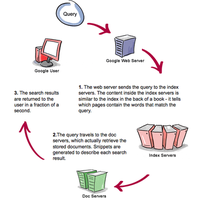How does work...work?
In Physics,
the concepts of work and power help us understand
and explain lots of things in our universe.
Let's start with work. Positive work is the energy we put into a system,
and negative work is energy that is transferred out.
Think of positive work as money being added to your bank account,
and negative work as money taken out.
In the metric system,
work and energy are measured in Joules.
As an example, let's take a beautiful, old, mechanical grandfather clock. We transfer energy into the clock
when we turn the crank
to raise the heavy metal cylinders inside the clock.
When we do this, we are doing positive work,
adding energy to the clock,
and that energy is stored as gravitational potential energy.
We can calculate the amount of work done by multiplying the force we apply
times the distance we over which we apply the force.
To raise the metal cylinders,
we need to apply a force equal to their weight.
That is, equal to the force of gravity
pulling downward on the cylinders.
These cylinders weight 300 Newtons,
which is pretty heavy,
about as much as a small child,
and if we lift them 1/2 meter,
then we do 300 Newtons
times 1/2 meter
or 150 Joules of work.
Power is the rate at which energy is transferred.
When we say rate,
we mean the amount of energy transferred
per unit of time.
In the metric system, power is measured in
Joules per second,
or Watts.
The term Watt goes back to James Watt,
who came up with the concept of horsepower
to measure the amount of power
produced by a typical work horse.
James Watt was a producer of industrial steam engines,
and he wanted his potential customers
to be able to make comparisons
between his steam engines and a familiar quanity,
the power they could get from a working horse.
It was such a useful idea
that the metric system unit for power, the Watt,
is named after James Watt.
Following in James Watt's footsteps, let's compare the amount of power it takes to run this grandfather clock
to the power we'd need to run a bright, 100-Watt light bulb.
We can measure the power a person uses
to wind the clock
by dividing the amount of work they did
by the time it took them to do it.
If it takes 1 minute, or 60 seconds,
to lift the weights,
then they are doing 150 Joules
divided by 60 seconds,
or 2.5 Joules per second of work.
They are adding energy to the clock
in the rate of 2.5 Watts.
You would need about 40 times as much
to run a bright, 100-Watt light bulb.
Before we let the clock run,
the energy is stored
as gravitational potential energy of the cylinders.
It's like your bank account when you have just deposited money.
But if we let the clock run,
the cylinders slowly move downward.
Energy is leaving the clock.
In fact, when the cylinders get to the bottom,
all the energy that we put in will have left.
So how much power does the clock use?
That is, how many Joules of energy per second leave the clock
if it takes 5 days for the cylinders to return to their original position?
We can figure this out
because we already know how much work we did
when we lifted the cylinders:
150 Joules.
But this time, it took 5 days rather than a minute.
Five days is 5 times 24
times 60
times 60 again
or 432,000 seconds.
So we divide the work done by the time
and find the answer of about 0.00035 Joules per second,
or about 0.35 milliwatts.
That's a tiny amount of power. This clock uses so little power
that you could run almost 300,000 clocks
using the same power it takes to run one 100-Watt light bulb.
That's right, you could run a clock in every house in a medium sized city with that much power.
That's a pretty amazing conclusion and it took knowledge of work
and power to figure it out.

